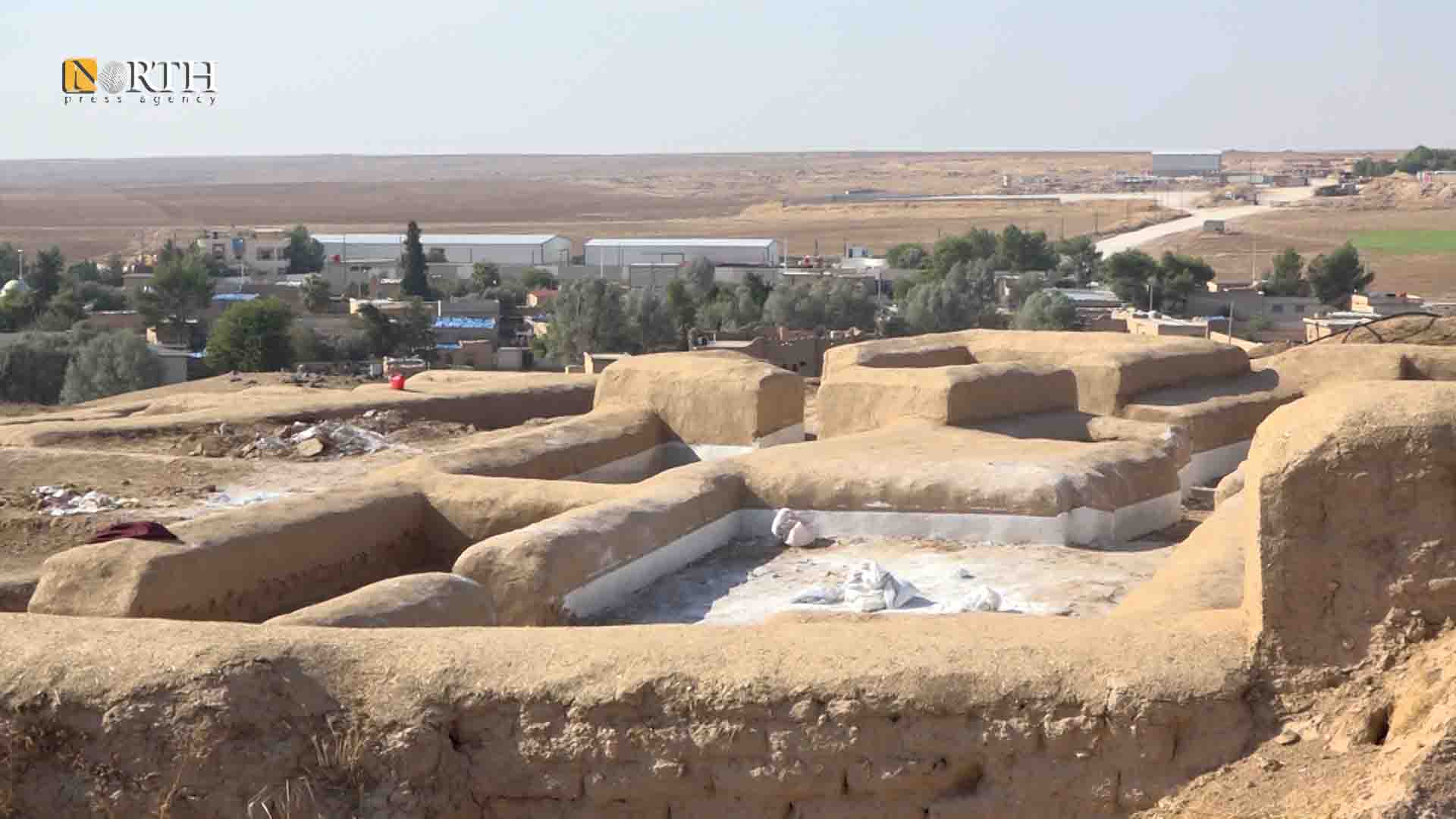QAMISHLI, Syria (North Press) – The Antiquities Directorate of the Autonomous Administration of North and East Syria (AANES) launched a project two months ago under the name of the “The Extended Project of Jazira,” which aims to comprehensively restore the archaeological site at Tel Beydar.
The project also aims to equip warehouses with appropriate conditions to preserve and protect archaeological finds, according to those in charge of it.
Part of the site had collapsed due to the weather conditions and lack of care, and the project supervisors expect to complete the restorations by December.
The site of Tel Beydar is located in Upper Mesopotamia and more precisely in the Upper Syrian Jazira, a region called the “Khabur Triangle”, a sort of delta without a sea, formed by the tributaries of the Euphrates River.
Thamer al-Maish, a resident of the village of Tel Beydar (35 km north of Syria’s city of Hasakah), is trying to smooth the plaster that he placed on the lower part of the wall of the ancient temple of Tel Beydar, a place inhabited by his ancestors, in an attempt to preserve what remains of this archaeological site.

Al-Maish, who oversees a team of nine workers restoring the archaeological site of Tel Beydar, told North Press that he had to choose a team who did not have experience working in the archaeological sites, as “it is impossible to find experts in the region.”
Al-Maish was assigned by the Antiquities Directorate to form a working group to restore the archaeological site, where he worked for years with the European Mission as well.
The supervisor of the workers does not hide the difficulty of the work, as “the treatment of the archaeological blocks must be carried out with utmost focus and caution.”
A joint European mission has worked on restoring the site from 1992 until 2010, but it stopped working and withdrew since the beginning of the war in Syria.
The European mission found, during its work, about 230 archaeological cuneiform slabs containing “economic symbols,” indicating the economic importance of the site at that time, according to the Antiquities Directorate of the Autonomous Administration.
Roshan Haj Ali, a member of the Antiquities Directorate, said that the project aims to preserve the site and its four temples, after the fifth collapsed and the mission was unable to restore it.
Haj Ali indicated that the project aimed to restore 80% to 90% of the site, as the work has been divided into five phases, including preparing the site for work, peeling the plaster, dismantling the walls that are liable to fall from its surroundings, and treating cavities.
A wall of about two kilometers long surrounds five temples and two palaces, one of them Hellenistic and the other Sumerian within the site.
The wall contains seven doors in the front, while the back contains 14 doors, and each door used to lead to a site, according to information available to the Antiquities Directorate of the Autonomous Administration.
The Antiquities Directorate restored the site three times before launching the current project, “but previous attempts were ambulatory, while the current project is the most comprehensive,” according to Haj Ali.

